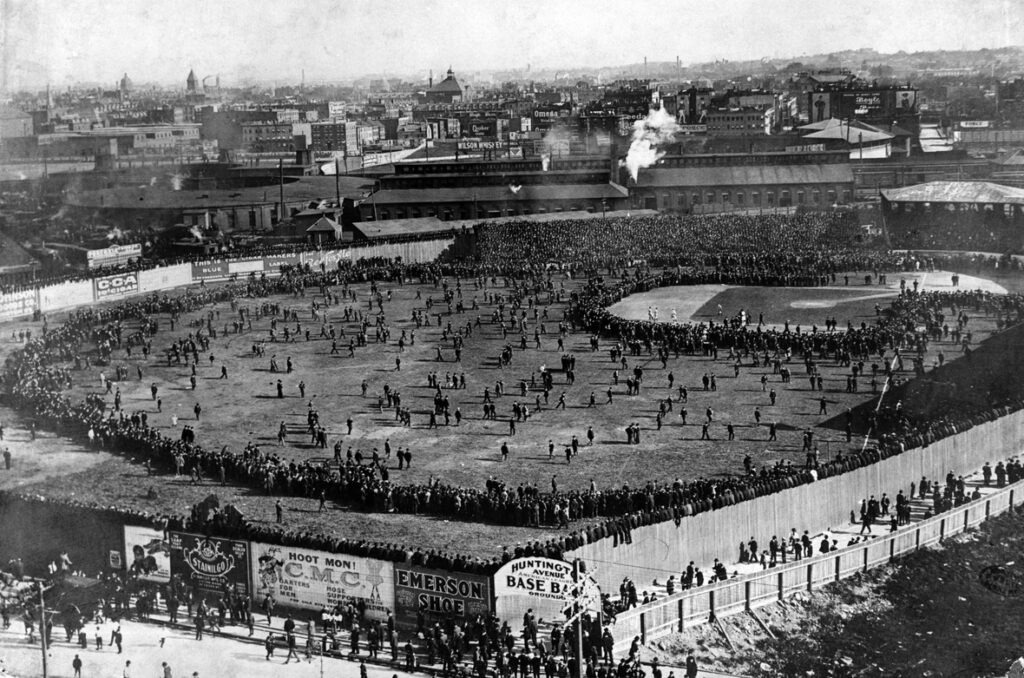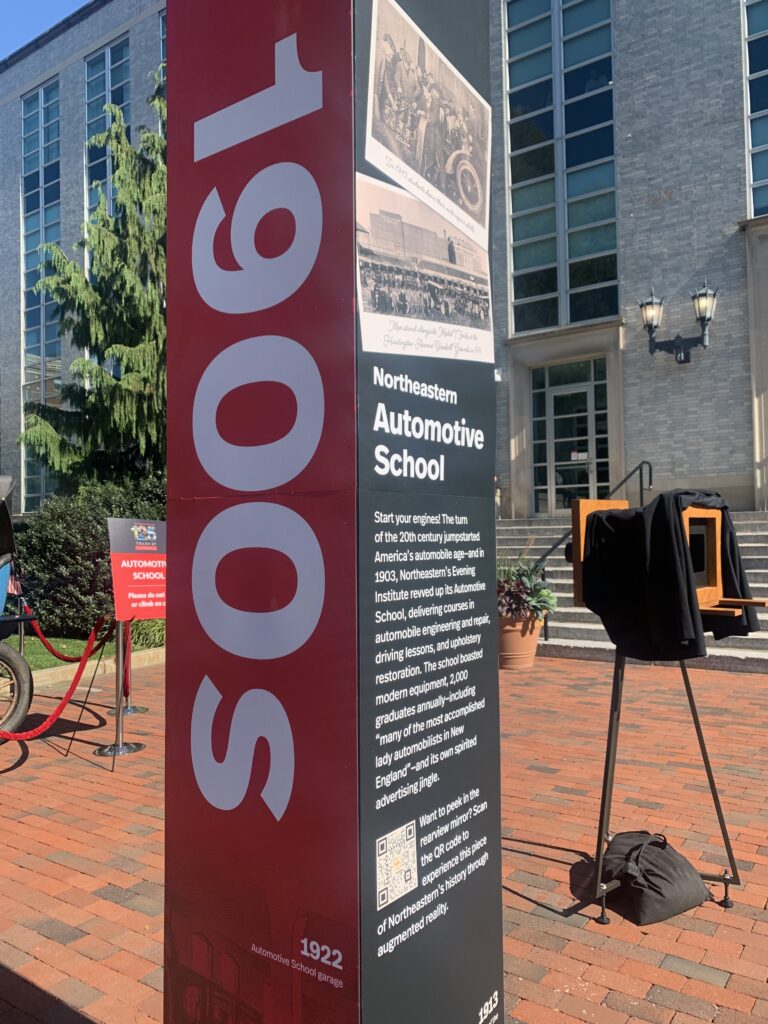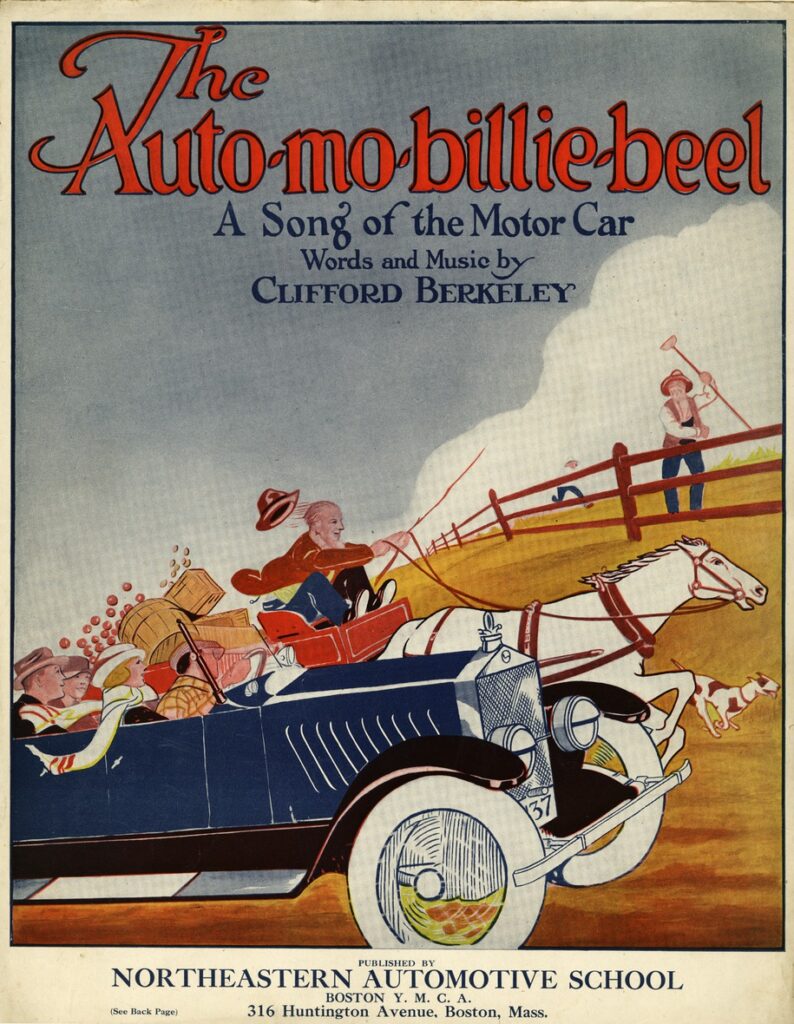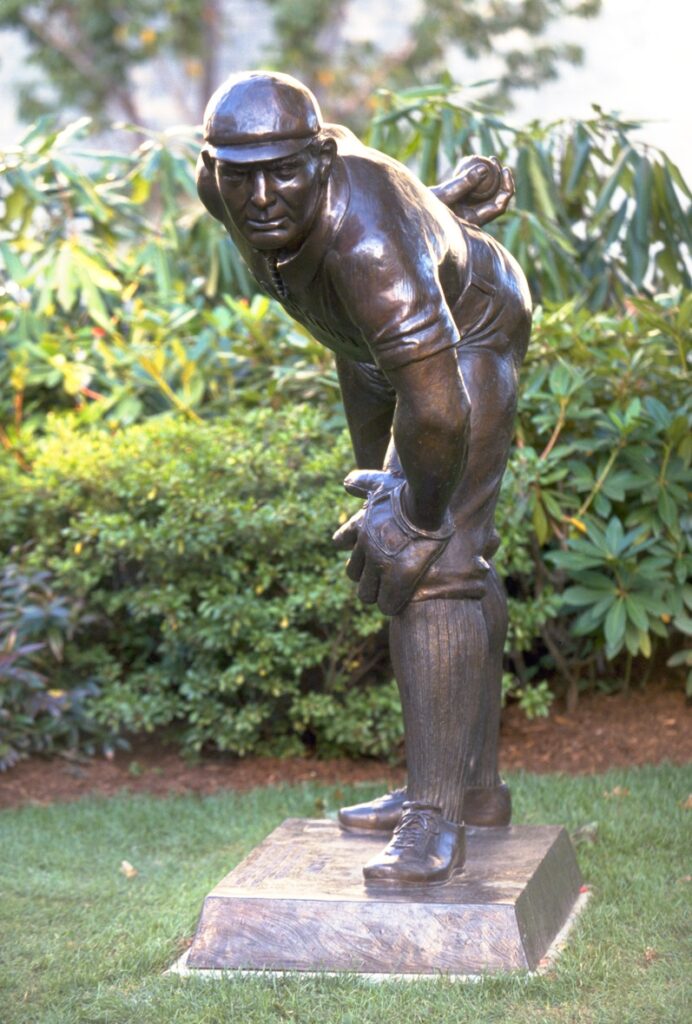Automobiles, the World Series, and the Iditarod all have at least one thing in common: Northeastern.
This year, the Archives and Special Collections staff have been doing research and digitizing records to support the observance of the university’s 125th anniversary.
Around the Boston campus, you can still see the signs installed on Founders Day detailing Northeastern’s development and the Boston campus history.
As we approach Homecoming Weekend, here are some features of Husky history to brush up on:
Northeastern’s Automotive School
The Automotive School was established in 1903 as a part of the Evening Institute. Franklin Palmer Speare anticipated that with the rise of automobiles in America, there would be need for related education. Classes offered included automotive engineering, driving lessons, upholstery, and auto repair. It was a high-enrolling school until the 1920s and it officially closed in 1926. The Automotive School even had a jingle written for it: “The Auto-mo-billie-beel.”
King Husky I
King Husky I was trained by Leonhard Seppala. When Vice President Carl Ell sought out Seppala in 1927, he did so not only because Northeastern needed a mascot, but also because Seppala had already inspired one great tradition: the Iditarod Trail Sled Dog Race. In 1925, Nome, Alaska, experienced an infamous diphtheria epidemic. Teams of sled dogs played an important role in bringing diphtheria serum through extremely harsh conditions. Leonhard Seppala and his team of Siberian huskies carried the serum over 91 miles of the treacherous relay before passing the cargo to the more famous Gunnar Kaasen, driver of the famous Balto, who covered the final stretch of trail and delivered the serum to Nome. The effort made by Seppala and the other teams have since been commemorated yearly by the Iditarod Trail Sled Dog Race.
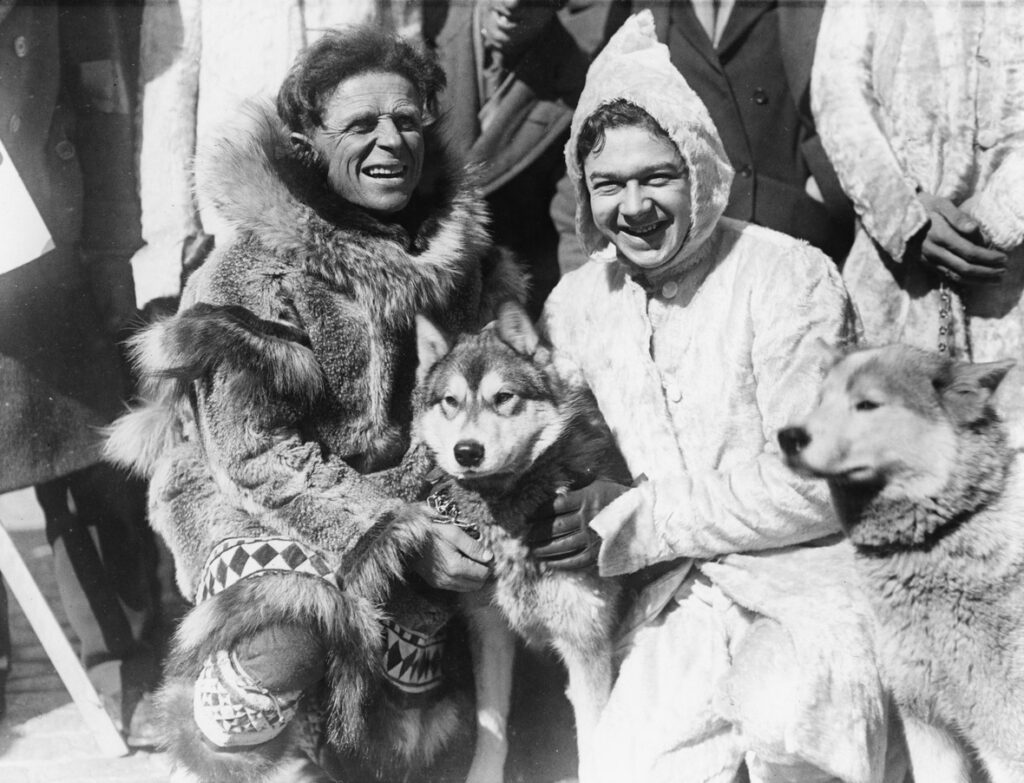
King Husky was beloved by the students, and Seppala even provided feeding instructions for the care and keeping of King Husky I.
Northeastern and the World Series
Northeastern’s Cabot Physical Education Center now occupies what were the grounds for the first World Series, which took place in 1903 between the Pittsburgh Pirates and the Boston Americans. The Americans became the first-ever World Series champions and the event is commemorated with a statue of Americans pitcher Cy Young located between Cabot Center and Churchill Hall.
